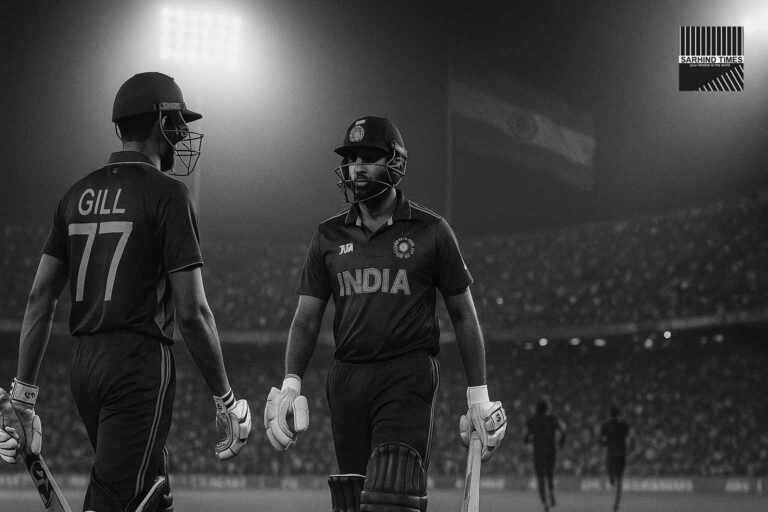Pakistan shrugged off pre-match drama and out-bowled a disciplined UAE to win by 41 runs in Dubai, sealing a Super-4 showdown with India on Sunday. Fakhar Zaman’s fifty and Shaheen Shah Afridi’s all-round surge underpinned Pakistan’s recovery from early wobbles, before their spinners closed the door on UAE’s chase.
Match Snapshot (TL;DR)
- Result: Pakistan beat UAE by 41 runs to reach the Super 4.
- Scoreline: Pakistan 146/9 (Fakhar 50; Shaheen 29*; Junaid Siddique 4/18) vs UAE 105 all out (Rahul Chopra 35; Abrar 2/13; Shaheen 2/16).
- Venue: Dubai International Stadium.
- What it sets up: India vs Pakistan in the Super 4 on Sunday.
1) The Win That Pakistan Needed—And Why It Wasn’t Routine
There was nothing routine about Pakistan’s approach to this game. Hours earlier, the fixture had been clouded by talk of a delay and participation doubts after the fallout from the previous India match—a swirl of grievances and officiating controversy that threatened to overshadow cricket itself. In the end, Pakistan turned up, batted first, stumbled to start, and then composed themselves to a competitive total built on calculation rather than flourish. Their bowlers—mixing left-arm pace with clever spin—did the rest. The margin, 41 runs, felt both commanding and cathartic: job done, ghosts parked, next rivalry loaded.
2) Key Moments: Where the Game Tilted
Fakhar’s Stabilizer
Fakhar Zaman’s half-century wasn’t explosive; it was adhesive. He absorbed a tricky length from a UAE attack that refused to blink—particularly Junaid Siddique (4/18) and Simranjeet Singh (3/26)—and kept nudging Pakistan to a base on which to build. In a game where batters hunted twos more than sixes, Fakhar’s tempo control mattered.
Shaheen’s Two-Act Cameo
With the bat: 29 off the last stretch* to push Pakistan from “par” to “defendable.”
With the ball: two timely strikes and high-pressure overs that suffocated a UAE middle-order lacking a bailout hitter. The all-round imprint was unmistakable.
Spin That Tightened the Screws
Pakistan’s spinners, led by Abrar Ahmed (2/13) and supported by part-time options, turned the chase into a sequence of hard singles and dot-ball dunes. Once wickets fell in clusters, UAE’s well-structured pursuit frayed.
3) UAE’s Brave Blueprint—And Its Limits
A hallmark of this UAE side across the tournament has been structural discipline: clear new-ball plans, powerplay parsimony, and middle-overs relentlessness. This night stayed on script with the ball—Pakistan were 146/9, not 196. The chase plan was to keep wickets in hand and punch late. But three things turned that plan inside out:
- Pakistan’s late surge to 146/9 flipped the par calculation by 10–15 runs.
- Spin choke in overs 8–14 meant the asking rate never relented.
- The pressure to find boundary pockets against smart fields produced soft dismissals.
For a team still stitching depth and experience at this level, the difference between good and just-short is often the last 30 balls. UAE were competitive for 80–85; Pakistan owned the last 35.
4) The Scoreline Under a Microscope
Pakistan 146/9 (20 overs)
- Fakhar Zaman 50: Navigated the wobble; set up the back-end.
- Shaheen Afridi 29:* Momentum theft at the death.
- Junaid Siddique 4/18, Simranjeet Singh 3/26: UAE’s new-ball and change-ups rattled Pakistan early and late.
UAE 105 all out (17.4 overs)
- Rahul Chopra 35: Best of the UAE innings—assured footwork, range through the V.
- Abrar Ahmed 2/13, Shaheen 2/16: Squeezed the middle, broke stands before they bloomed.
Numbers alone flatter neither side: Pakistan’s batting was workmanlike; UAE’s bowling was worth more than a 41-run defeat; the gulf appeared in game management and depth under scoreboard heat.
5) The Pre-Match Drama: Delay, Doubts, Then Cricket
The contest started an hour late after a raft of reports around Pakistan’s participation—linked to grievances from the India match and officiating assignments. Tournament officials and media traced the chain to objections over the match referee and the post-match handshake saga. Eventually, the deadlock eased; the game began; cricket reoccupied the stage. Still, the episode reinforced how geopolitics and symbolism can gnaw at a sport that desperately needs the quiet of a first ball.
6) What the Result Means
For Pakistan
- Super 4 ticket punched; a rivalry rematch looms on Sunday.
- Encouraging signs: bowling versatility, clutch finishing from Shaheen, and Fakhar finding rhythm.
- Questions remain: Middle-order fluency, death batting consistency, and whether they can carry composure when the India game raises the emotional thermostat.
For UAE
- Tournament exit confirmed, but the bowling group has a template to keep.
- Next steps: grow finishing options, add middle-order power without losing structure, and convert par-restricting spells into chase platforms. The gap to the top is still sizeable, but not abstract.
7) Scouting the Super 4: India vs Pakistan—Five Match-Ups to Watch
- Rohit/Shubman vs Shaheen/Naseem: India’s seam-movement playbook at the top has matured; Pakistan’s new-ball left-arm menace remains their identity anchor. Early wickets rewrite both teams’ batting plans.
- Kuldeep vs Fakhar/Babar: Kuldeep Yadav’s wrong’un and pace variation against left-right pairs is a tactical minefield; Fakhar’s intent can disrupt lengths, but Babar’s tempo control can stonewall.
- Hardik/Jadeja vs Middle Overs: India’s balance often hinges on the Hardik-Jadeja axis; Pakistan will try to drag them into boundary deserts.
- India’s death batting vs Pakistan’s death bowling: If it’s a 160-ish chase, the last four overs decide it; execution beats reputation here.
- Pressure handling: Review systems, fielding intensity, and over-rate discipline—small edges win big games.
(Exact XIs may vary; the strategic spine won’t.)
8) The Psychology of a Rivalry: Noise vs Nuance
India–Pakistan games are cauldrons. Social feeds spike, every gesture becomes a headline, and teams ferry extra baggage to the toss. The best sides develop rituals that shrink the game: shorter huddles, simplified roles, pre-agreed tempo shifts. Pakistan’s task is to bottle the compact ruthlessness they showed against UAE in the field; India’s is to firewall momentum swings with their middle-over machine. Sunday will be either a fight for inches—where 135 is defendable—or a boundary spree lit by a couple of powerplay events. Either way, execution under pressure, not quotes from the build-up, will script the outcome.
9) Tactical Board: Lessons from Pakistan vs UAE That Carry Into Sunday
- Hold your nerve in overs 7–14. Pakistan’s choice to keep scores strangled—accepting singles, hunting dots—broke UAE’s chase rhythm. Against India, that window is where India often wins quietly (strike-rotation + fielding).
- Value the 120-to-140 corridor. On two-paced Dubai evenings, 146/9 proved defendable because the bowlers bought a margin. The team that treats 8.0–8.5 rpo as a defendable frontier will plan better.
- Death hitting is compounding. Pakistan’s 10–15 bonus runs via Shaheen’s cameo changed par. Expect both teams to throw an all-rounder at overs 18–20.
10) Individuals in Focus
Pakistan
- Shaheen Shah Afridi: All-phase influence; new ball + re-entry overs + late cameo.
- Fakhar Zaman: If the first 20 balls survive, the next 20 can swing a match; he did the first part against UAE and enough of the second.
- Abrar Ahmed: Wrist-spin with street-smart fields—Sunday upgrades both the contest and the consequences.
UAE
- Junaid Siddique / Simranjeet Singh: New-ball discipline that’ll get noticed in leagues; control under dew and lights was outstanding.
- Rahul Chopra: Front-footed technique; needs a partner to convert a platform into pressure.
(Profiles compiled from match reports/live blogs.)
11) Stats & Nuggets
- Result spread: Pakistan by 41 runs—their defense succeeded with four overs unused by UAE.
- Top Pakistan scorer: Fakhar 50 (anchor role). Best UAE bowler: Junaid Siddique 4/18.
- Venue: Dubai International Stadium; Super 4 IND-PAK set for Sunday per multiple outlets and ACC confirmation.
12) The Off-Field Elephant: Officiating & Optics
A passage of reporting painted a tense pre-match corridor—participation doubts, a delayed start, and a lingering handshake controversy from the earlier India game. It ended the right way: with a game. But Sunday will require more than fences on the concourse. Tournament management must pre-empt flashpoints: brief captains, align match officials, and communicate early with fans. The best advertisement for cricket is a night where the only drama is a slower ball.
13) What to Watch on Sunday (Viewer’s Checklist)
- Powerplay parity: Does either side go 0/1 in 3 overs? That swings PP risk appetite instantly.
- Spin match-ups: Who bowls over No. 7 and 13? Those overs trap momentum.
- Boundary droughts: Track any 10-ball stretch without a boundary—it usually maps to wickets or scoreboard panic.
- Fielding tells: Misfields under lights correlate with frayed nerves; watch ring fielders on the third-man and extra-cover edges.
- Captaincy cadence: Bowling changes in the 9–12 band are a window into dressing-room clarity.
14) The Bigger Picture: Asia Cup’s Audit of Form
The Asia Cup rarely predicts ICC trophies, but it audits form and decision-making under continental pressure. Pakistan’s win over UAE was a clean, necessary tick. India’s own passage has shown their layered middle and flexible bowling. Sunday won’t settle global arguments—but it will teach both teams what they can carry into the business end.
#AsiaCup #INDvPAK #Cricket #Super4 #PakistanCricket #TeamIndia #ShaheenAfridi #FakharZaman #Dubai #T20Cricket #MatchReport #Analysis

























+ There are no comments
Add yours